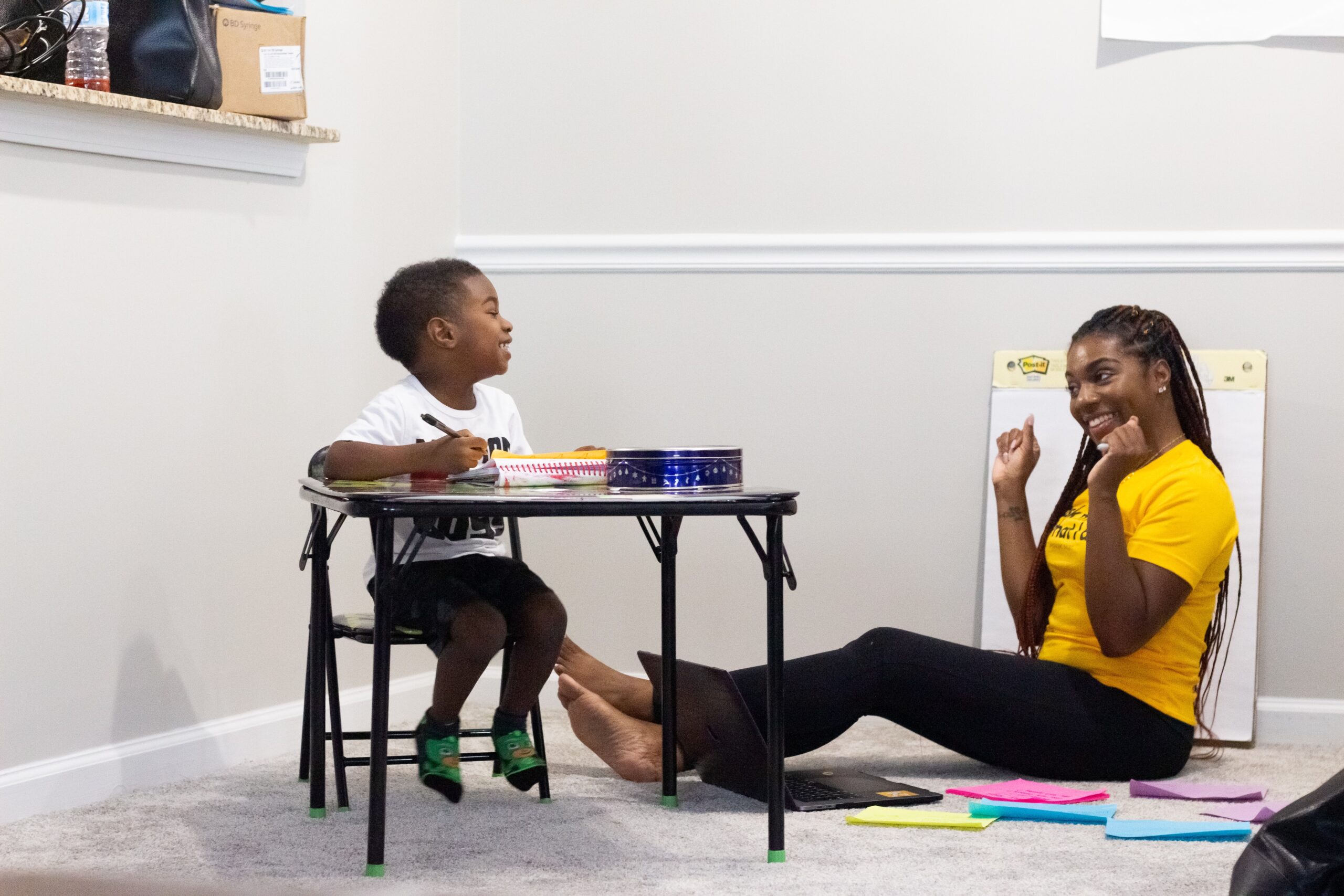Montessori At Home vs. School
 While the core tenets are the same, there are many key differences between Montessori at home vs. school. Enrolling your child in a Montessori school can be one of the best decisions you make for their education, but Montessori schools are often out of reach for many families because of their hefty price tag. Fortunately, a private Montessori school isn’t the only way to give your children the benefits of Montessori education. With a few supplies and a little creativity, you can create a Montessori environment in your own home.
While the core tenets are the same, there are many key differences between Montessori at home vs. school. Enrolling your child in a Montessori school can be one of the best decisions you make for their education, but Montessori schools are often out of reach for many families because of their hefty price tag. Fortunately, a private Montessori school isn’t the only way to give your children the benefits of Montessori education. With a few supplies and a little creativity, you can create a Montessori environment in your own home.
The Montessori at home environment has several perks you don’t get in a regular classroom. Below are four ways Montessori at home is an excellent alternative to the traditional Montessori school for parents seeking flexibility, affordability, and the fun of learning beside their child.
There Is No Set Curriculum
Children are presented with a completely different experience when it comes to Montessori at home vs. school. Montessori classrooms are more structured and organized. Montessori at home, on the other hand, lets the parent integrate Montessori methods into their everyday life. This creates an educational environment that suits the child’s needs. Parents also don’t have to follow a set curriculum at home.
Montessori at home provides a relaxed and nurturing environment for your children by letting them naturally progress through their interests every day. The child is in complete control of their own pace. This promotes independence and inspires self-directed learning. Montessori at home has a more child-centered approach because it can be customized to the child’s curiosity, needs, and skill level. After all, the heart of the Montessori method is that play is the child’s work. The lack of a curriculum keeps it that way, intentionally.
Learning Doesn’t End When The Bell Rings For The Day
 Montessori at home means learning is continuous throughout the day. At a Montessori school, the school environment is naturally structured to support a classroom of eager learners with a day that will end. But when the bell rings for dismissal, it gives the unintentional signal that learning is finished with the conclusion of the school day. Montessori at home vs. school helps children adopt the mindset that learning never stops.
Montessori at home means learning is continuous throughout the day. At a Montessori school, the school environment is naturally structured to support a classroom of eager learners with a day that will end. But when the bell rings for dismissal, it gives the unintentional signal that learning is finished with the conclusion of the school day. Montessori at home vs. school helps children adopt the mindset that learning never stops.
There are no obvious and abrupt transitions, such as a designated snack or nap time. With a properly prepared environment, children move throughout the house without restrictions as to what kind of work they have available at any given moment. A true Montessori environment, in the traditional school sense, allows children to explore their environment with freedom and natural wonder.
There Is No Pressure To Be Perfect
Most Montessori schools have a student-teacher ratio of no more than 12:1. Montessori at home vs. school, on the other hand, can be done in a one-on-one setting. The main goal of Montessori is not to prepare students for school, but rather to create lifelong learners who have an interest in education. Children are encouraged to always be willing to learn something new. There is no pressure to do everything perfectly or be the best student.
Competitive behavior has no place in the Montessori method, but some children naturally want to be the best or feel like they may fall short when they compare themselves to their classmates. Montessori at home provides the opportunity to learn and grow without any comparison, empowering children to take responsibility for their learning.
Children Learn Alongside Their Parents
What’s awesome about doing Montessori at home is that children can do their work right alongside mom or dad. Helping out with household chores is a Montessori-approved way to help children gain a sense of independence. Children are typically given independent work time every day in the Montessori classroom, and this is something parents can easily replicate at home. When they’re doing their own thing Montessori style, kids have more positive associations with everyday activities such as cleaning, doing dishes, and all of those other in-between moments.
Montessori advocates believe that these types of lessons are more valuable to the child than anything that they can learn at school. Working alongside mom and dad prepares children for real-life experiences. In the process, it also brings everyone involved closer together as a family. If you need a little help in getting started with encouraging your child to join in with household chores, check out the Helping Hands Toolbox for more inspiration.
Montessori at home also offers the parents the potential to save money, time, and energy because the principles of the Montessori method can be applied in other areas of a child’s life. It’s a versatile, practical approach that involves providing children with adult-sized responsibilities right alongside them, so they learn from real tasks rather than abstract lessons. Overall, the Montessori experience is one that your child will never regret and will carry with them for the rest of their lives.





0 Comments